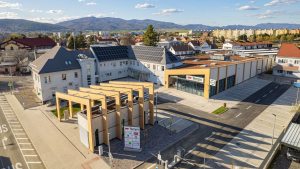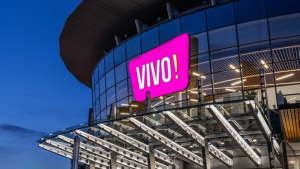
The non-residential green building market is projected to grow by 9% a year from $69.01 billion in 2021 to $110.52 billion in 2025. How does the warehouse industry deal with social and environmental challenges? Will Poland, as the second most active development market in Europe, become a leader in decarbonization?
According to the national building sector's 2050 vision, all buildings should have a zero operational carbon footprint, while new developments and renovated buildings should have a net-zero lifecycle carbon footprint by 2050. But what is the situation today? The number of warehouses and logistics facilities designed and built according to the assumptions of multi-criteria certification is increasing. The PLGBC report "Green Building Certification in Numbers 2021" shows that the green certified space between March 2020 and March 2021 increased by 76%. Developers, tenants, and investors are increasingly recognizing the social and commercial benefits of developing and using this type of space.
"We have delivered over 200,000 sqm of certified warehouse space since the beginning of 2021, and our goal is to deliver another million sqm of facilities by the end of 2022. All of these developments will be BREEAM certified. By building in an eco-friendly standard we are able to reduce energy consumption by up to 50% and carbon dioxide emissions by about 381 tons per year for a 20,000 sqm warehouse. This brings 7R closer to its goal of climate neutrality. Environmental responsibility issues are also a key element in our ESG strategy", says Tomasz Lubowiecki, Founder and Chairman of the Board at 7R.
The ESG standard is now influencing the value of real estate. A PwC survey showed that almost one in three investors in Poland already include Environmental, Social and Corporate Governance risks in their investment strategy. Responding to the climate crisis is necessary today. According to the report, "Roadmap for Decarbonizing Construction by 2050,” buildings play a key role in this process.
According to 7R's calculations, by using a gray water system, controlling consumption and leakage, and managing rainwater properly, 2,400 liters of water can be saved per day for a 20,000 sqm warehouse. Photovoltaic panels on half of such a building’s roof are able to provide up to 100% of daily energy demands, and panoramic skylights can reduce a building’s operating costs by more than 7%. These examples show that the professionalization of the sector in terms of green solutions is not exclusively reliant upon the implementation of advanced technologies. Building systems, more or less developed, should be complementary. Integrated BMS (Building Management Systems) increasingly control the entire operation.
"Low-carbon buildings are an important response to climate change. We want to develop green warehouses throughout Poland. To help us achieve this, we have secured land that will allow us to build 3.5 million sqm of space. For example in Radzymin, we are currently developing the most modern distribution center in the Polish food industry for Żabka Polska. Reducing the carbon footprint of the property is one of the top priorities for our client. Therefore, the center will be powered by photovoltaic panels, and we will maintain air quality in the maneuvering area for trucks by using special dust-free paving and anti-smog towers", explains Tomasz Lubowiecki.
Furthermore, in Balice near Cracow, 7R has built a research and development center for BWI Group, which uses a trigeneration system for energy production. By using a gas turbine, the system generates energy for power, heating, cooling and ventilation. It means that the facility is almost entirely self-sufficient in terms of power consumption.



